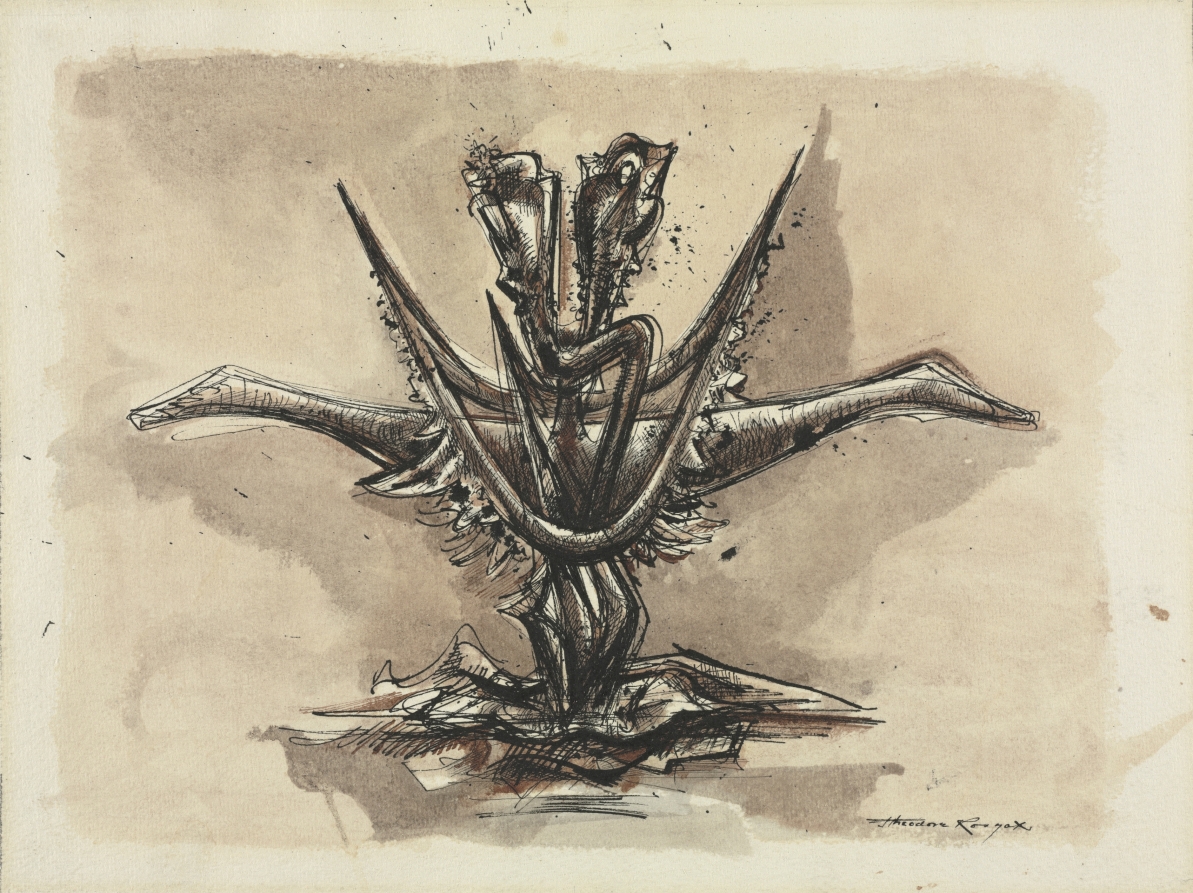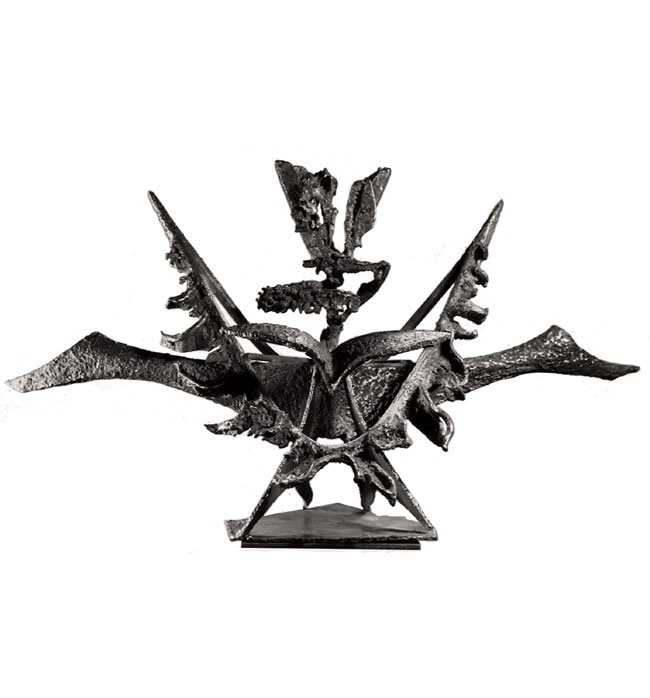Mandrake, 1951
"The mandrake is a reputedly poisonous and narcotic plant, usually found growing in the Mediterranean area, although one form of it is found throughout the northern zones of Europe and America. It grows with forked roots causing it to bear a touch resemblance to the human figure, and it is fabled to emit a terrifying shriek as it is torn from the dart. Both its appearance and its narcotic and poisonous reputation established a prominent place for it in old chronicles of magic and witchcraft." [ The Bulletin of the Cleveland Museum of Art, November 1964.]

Steel brazed with copper
64.70 x 101.60 x 29.80 cm (25 7/16 x 40 x 11 11/16 inches).
Collection: The Cleveland Museum of Art. Gift of the Cleveland Society for Contemporary Art, 1964
"It is very much like Baudelaire's "Flowers of Evil" in that sense, and it indicates pretty much the kind of fruition that can develop even from evil intentions. We have the flowering of destructive forces on a par with even constructive ones. It was done at a period when all of these evil characteristics in society were taking on all kinds of extensions and influence and power. We need not assume that evil necessarily is always something that is on the way out, but it is constantly with is and can prow in any given situation that is propitious to its development. This is a kind of legendary recapitulation of that same evil force found in the contemporary situation when it was done." [Theodore Roszak Interview with Elliott, 1956, p.12]

Mandrake, 1951
Pen and brown ink and brown wash
Collection: The Cleveland Museum of Art, Ohio (1964).
